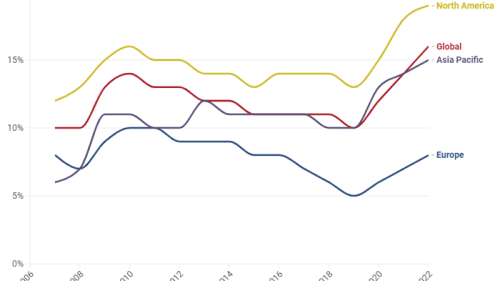See also, Top 25 Transportation Sources to Follow on Twitter.
Can Twitter be valuable to professionals in the housing industry? Not only is Twitter valuable for those wanting to interact with key thought leaders, journalists, and associations in the housing industry, but it is also valuable for finding timely information and identifying developments and trends within the sector.
In addition, Twitter is a valuable tool for marketers of multifamily developments looking to monitor what is being said about their project and handle resident concerns. Perhaps of greatest importance, it helps developers and marketers stay abreast of what is working and not working for their industry peers.
Urban Land magazine compiled a list of the most influential housing industry people on Twitter. This ranking includes the person’s name and Twitter handle alongside his or her rankings in reach, engagement, and influence. The persons’ Twitalyzer, Klout, and PeerIndex scores have been included, as well.
The methodology used to create the list employed several factors, including influence, number of followers, who each follows, and number of retweets. The methodology is explained in more detail below the chart.
Following is a list of the top 15 people and entities on Twitter covering the housing industry:
Rank | Name | Twitter Handle | Twitalyzer Score | Klout Score | PeerIndex Score |
1 | Inman News | 98 | 57 | 26 | |
2 | Binyamin Appelbaum | 97 | 60 | 53 | |
3 | Housing Wire | @housingwire | 97 | 53 | 11 |
4 | Urban Land Institute | 97 | 52 | 38 | |
5 | Bill McBride | 97 | 51 | 26 | |
6 | Nick Timiraos | 96 | 60 | 33 | |
7 | NAR Research | 94 | 48 | 44 | |
8 | Builder Online | 94 | 46 | 46 | |
9 | Wall Street Journal Developments Blog | 93 | 48 | 20 | |
10 | Standard & Poor’s | 91 | 48 | 60 | |
11 | Diana Olick | 90 | 52 | 41 | |
12 | Nate Berg | 89 | 52 | 45 | |
13 | Jonathan Miller | 88 | 48 | 50 | |
14 | National Association of Home Builders | 88 | 45 | 17 | |
15 | National Mortgage News | 85 | 56 | 56 |
The methodology used to create the list employed several factors:
“Influence” was the first criterion used. The theory behind this strategy is that if an influential person follows someone, then that person is likely influential. A person cannot be influential within a specific area or online community—housing, in this case—if he or she is not followed by other influential people.
A small group of housing industry thought leaders was initially picked for examination. Each thought leader had to meet specific follower/following requirements before being included into the subject pool. These leaders’ main Twitter pages were run through a content analysis, with an eye toward identifying overlaps or “shared” people who were followed among the group’s thought leaders.
This second group was then collected and measured through different established algorithms to determine popularity and influence. Rankings were then ordered based on their Twitalyzer score, a comprehensive measurement that produces a 100-point-scale numerical score based on the number of followers, how often the user is retweeted, how frequently that person tweets, and the number of times that person is referenced or cited by others.
Urban Land Institute



